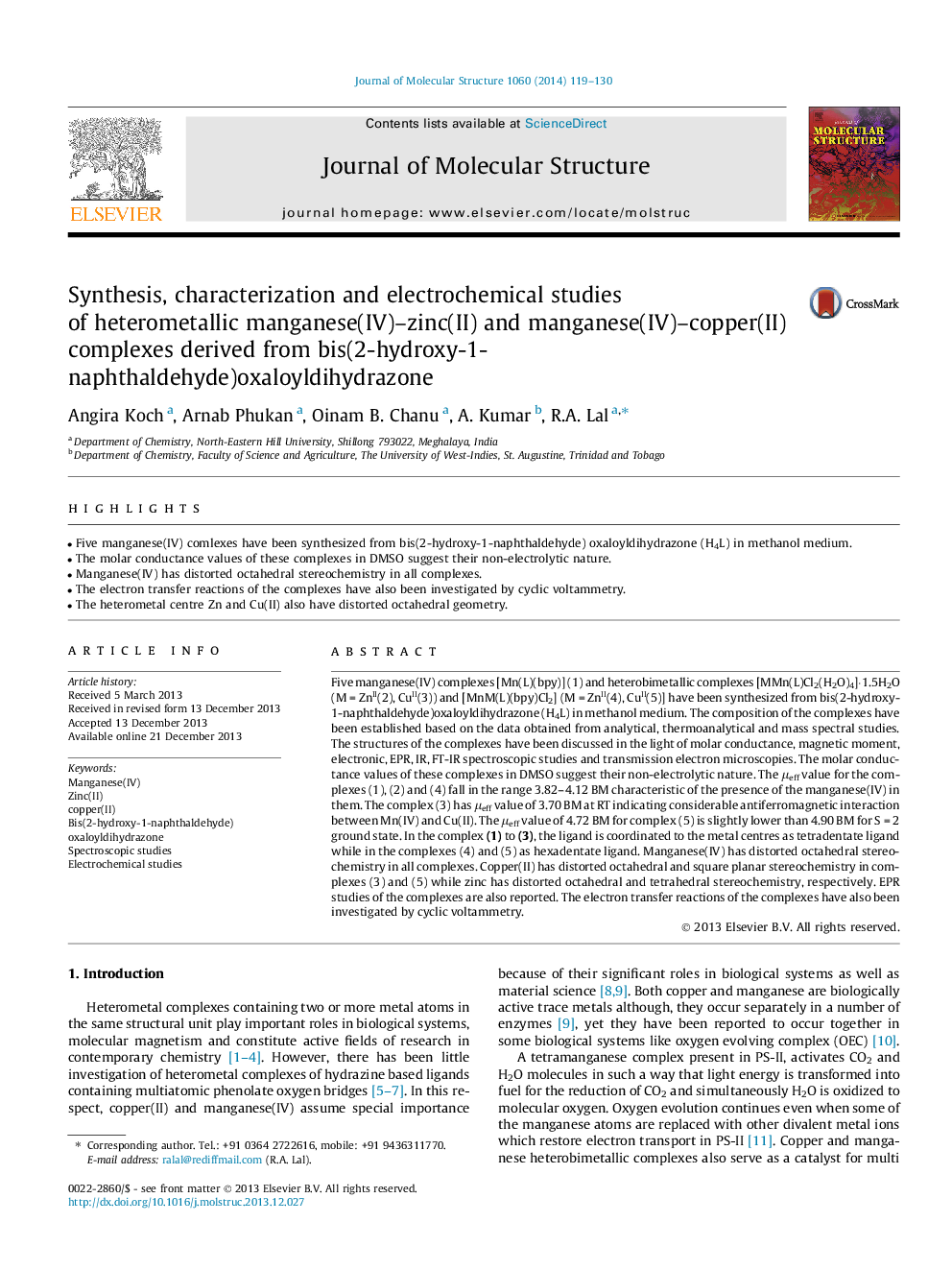| Article ID | Journal | Published Year | Pages | File Type |
|---|---|---|---|---|
| 1405628 | Journal of Molecular Structure | 2014 | 12 Pages |
•Five manganese(IV) comlexes have been synthesized from bis(2-hydroxy-1-naphthaldehyde) oxaloyldihydrazone (H4L) in methanol medium.•The molar conductance values of these complexes in DMSO suggest their non-electrolytic nature.•Manganese(IV) has distorted octahedral stereochemistry in all complexes.•The electron transfer reactions of the complexes have also been investigated by cyclic voltammetry.•The heterometal centre Zn and Cu(II) also have distorted octahedral geometry.
Five manganese(IV) complexes [Mn(L)(bpy)] (1) and heterobimetallic complexes [MMn(L)Cl2(H2O)4]·1.5H2O (M = ZnII(2), CuII(3)) and [MnM(L)(bpy)Cl2] (M = ZnII(4), CuII(5)] have been synthesized from bis(2-hydroxy-1-naphthaldehyde)oxaloyldihydrazone (H4L) in methanol medium. The composition of the complexes have been established based on the data obtained from analytical, thermoanalytical and mass spectral studies. The structures of the complexes have been discussed in the light of molar conductance, magnetic moment, electronic, EPR, IR, FT-IR spectroscopic studies and transmission electron microscopies. The molar conductance values of these complexes in DMSO suggest their non-electrolytic nature. The μeff value for the complexes (1), (2) and (4) fall in the range 3.82–4.12 BM characteristic of the presence of the manganese(IV) in them. The complex (3) has μeff value of 3.70 BM at RT indicating considerable antiferromagnetic interaction between Mn(IV) and Cu(II). The μeff value of 4.72 BM for complex (5) is slightly lower than 4.90 BM for S = 2 ground state. In the complex (1) to (3), the ligand is coordinated to the metal centres as tetradentate ligand while in the complexes (4) and (5) as hexadentate ligand. Manganese(IV) has distorted octahedral stereochemistry in all complexes. Copper(II) has distorted octahedral and square planar stereochemistry in complexes (3) and (5) while zinc has distorted octahedral and tetrahedral stereochemistry, respectively. EPR studies of the complexes are also reported. The electron transfer reactions of the complexes have also been investigated by cyclic voltammetry.
